Removing a Planters Wart at Home: Plantar Wart Treatments
How to treat your plantar wart. Everything you need to know to get rid of your plantar wart. Explore options for at-home treatment, seeing a foot doctor, or visiting your local GP.
Understand Your Enemy: What Are Plantar Warts?
Plantar warts are caused by a virus from the human papillomavirus (HPV) family. As such, they can look and feel different from person to person. To catch a plantar wart (also known as a verruca), you need to come into contact with the virus, often through small cuts or breaks in the skin on the bottom of your feet. The virus then infects the outer layer of the skin, causing the characteristic hard, callus-like growth.
Why Do People Fail to Treat Plantar Warts?
There are a few common reasons why people fail to successfully treat their plantar warts:
1. It’s not a plantar wart – it’s a plantar corn.
2. They think that if they pull out the “root” it will be gone.
3. They apply an over-the-counter remedy for just 3 days and then give up.
4. They see their doctor for their common wart to be frozen off, only to develop painful scar tissue that continues to return thicker and more painful every week.
Option 1: Treat Your Plantar Wart at Home
If you can reach your plantar wart, you can treat it at home with a safe and effective topical treatment. The key is to use a topical retinoid, a high-dose Vitamin A serum that disrupts the wart from building new wart tissue. Follow this guide on how to treat warts on your feet for best results.
Option 2: See a Foot Doctor (Podiatrist)
Podiatrists are foot experts and plantar warts are one of the more common presentations they see in their clinics. They have plenty of experience and options to help. Podiatrists can design appropriate offloading to ensure you don’t suffer from pain while treating your plantar wart. They may use a combination of surgical debridement, medicaments like salicylic acid or silver nitrate, as well as topical retinoids.
Option 3: Visit Your Local GP
In many countries, your GP is often the first person you’ll talk to about your plantar wart. GPs have traditionally used cryotherapy (dry ice) as the front-line treatment. While this can be successful, there is a risk of deep burns on the plantar surface of the foot, which can become a lifelong problem. Be sure to discuss the risks and consequences of this treatment with your GP.
Choose the Right Option for You
Plantar warts can be effectively treated with no or minimal side effects. By reading this far, you’re already miles ahead of those who’ve tried and failed before you. Choose the option for your plantar wart treatment that you feel most comfortable with and stay true to your plan. You’ve got this!
Now that you know the common reasons for failure and the different treatment options available, you’re well on your way to getting rid of your plantar wart for good. Remember, treating a plantar wart takes time and patience, but it’s worth it to regain the confidence to walk around barefoot. Keep reading to gain a deeper understanding of plantar warts and the best ways to tackle them.
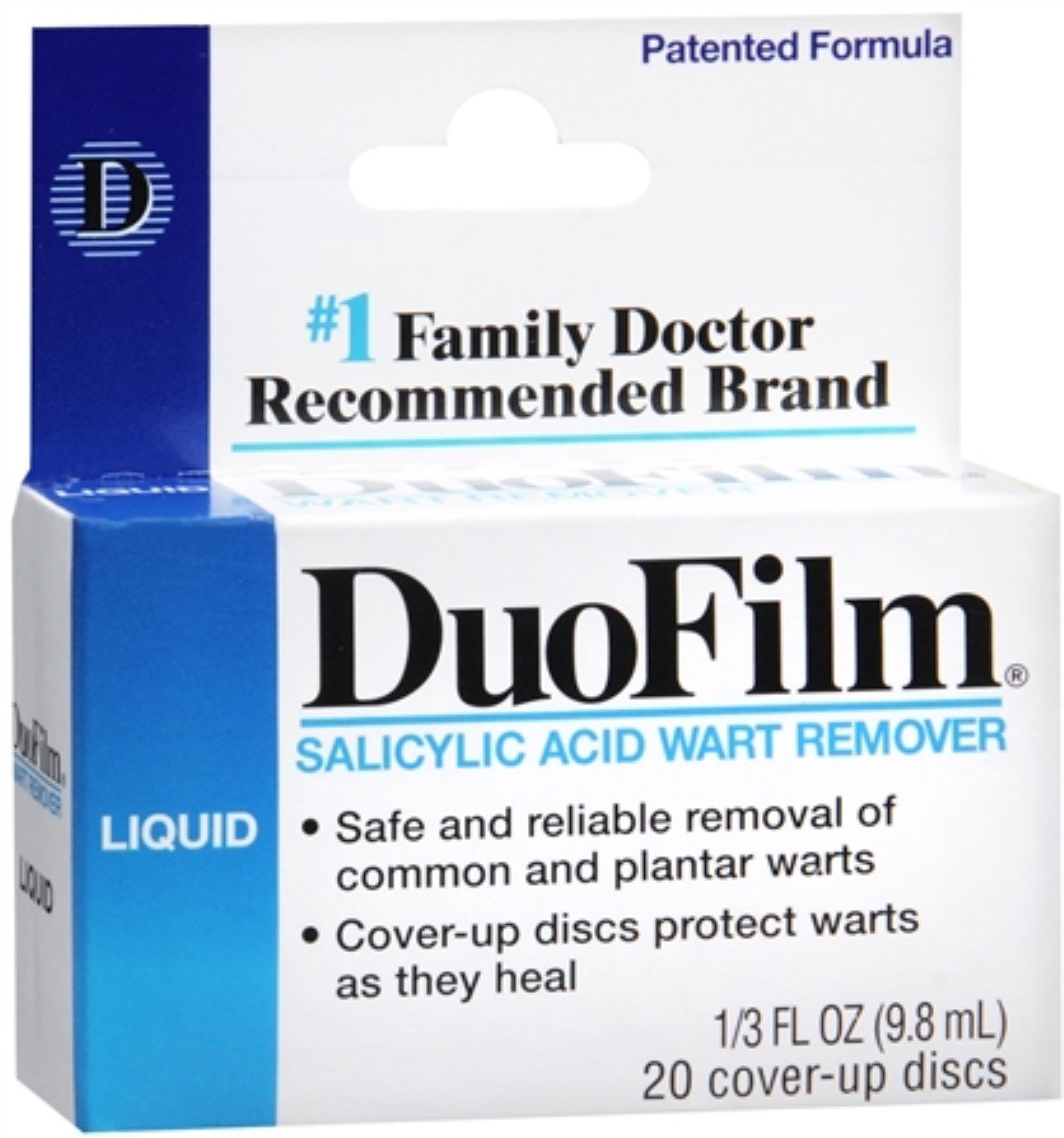
How Do I Know If It’s a Plantar Wart?
The key signs that you have a plantar wart include:
– A small, rough growth on the bottom of your foot
– A callus-like, hard growth that is painful when pressure is applied
– Small black dots or seeds in the center of the growth (these are actually blood vessels)
– The growth is located on a weight-bearing part of your foot
If you’re unsure, it’s always best to have a podiatrist or doctor take a look and confirm the diagnosis.
What Causes Plantar Warts?
Plantar warts are caused by the human papillomavirus (HPV), which can enter the body through small cuts or breaks in the skin on the bottom of the feet. The virus then infects the outer layer of the skin, causing the characteristic hard, callus-like growth.
Certain factors can increase your risk of developing plantar warts, including:
– Walking barefoot in warm, moist environments like public pools or showers
– Having a weakened immune system
– Picking at or scratching existing warts
The good news is that plantar warts are not highly contagious, so you don’t need to worry about spreading them to others through casual contact.
Now that you have a better understanding of what plantar warts are and what causes them, you can make an informed decision about the best treatment option for your specific situation. Remember to be patient, stay consistent with your chosen treatment, and don’t hesitate to seek professional help if needed. With the right approach, you can get rid of your plantar wart and regain confidence in your feet.
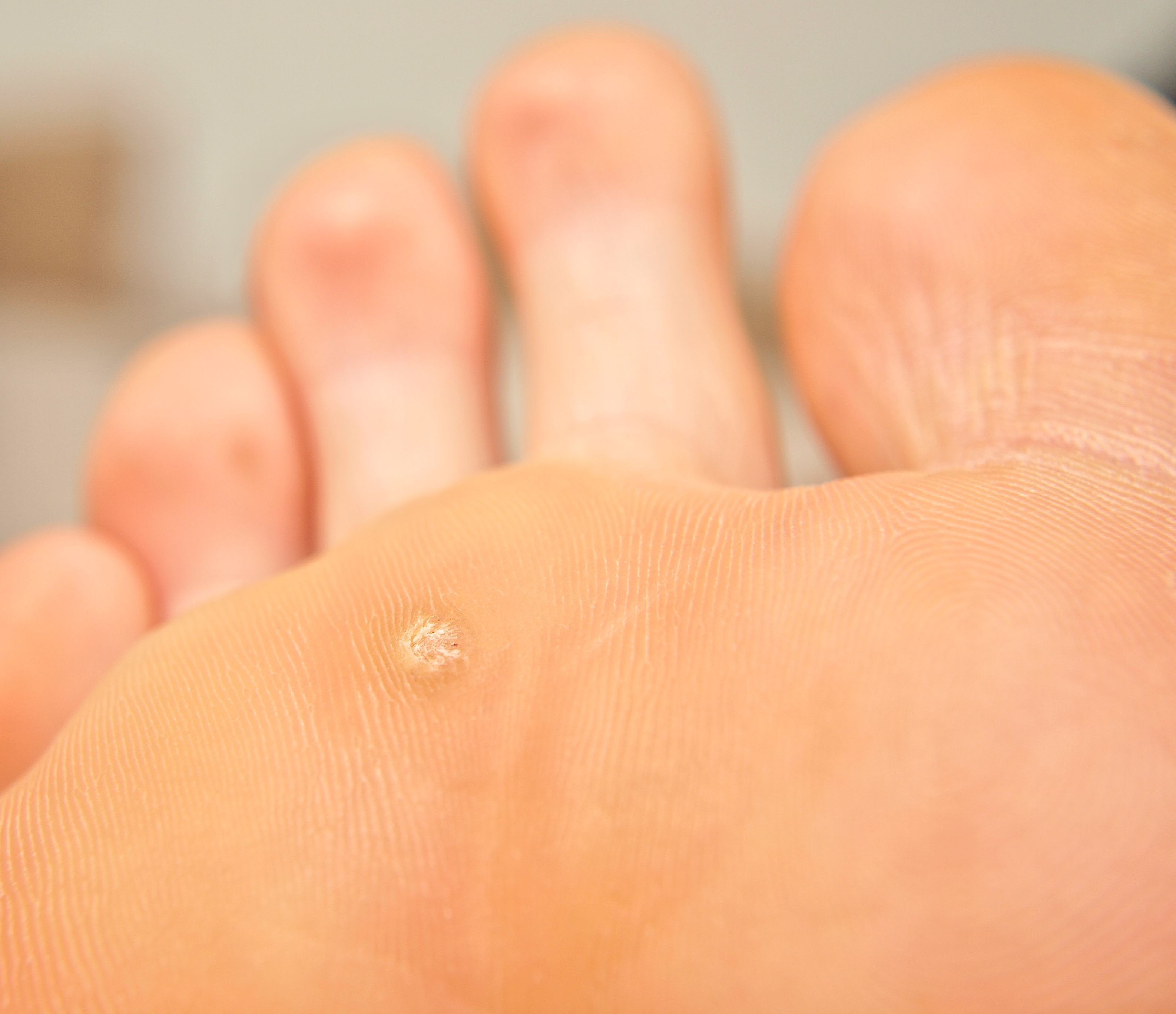
How To Treat Your Plantar Wart
By the time you’ve finished reading this article, you’re going to know everything you need to treat your plantar wart.
And I mean need to know.
If you’re reading this then you already know how embarrassing having a wart on your feet is. You know the feeling of having to keep your shoes and socks on to cover up the unsightly growth that is a plantar wart. You might also be sick of wearing thongs in the shower to protect your loved ones from catching your plantar wart too.
Unfortunately, though, not everyone can follow through with their plantar wart treatment to get the ultimate success. Plantar wart-free feet.
Plantar wart treatment takes time.
There’s no immediate fix for a common wart. But before you say stuff it – and keep searching for that miracle cure, stick with me for 2 more sentences.
I know this, as I’ve suffered with a plantar wart myself and as a podiatrist with over 12 years of experience I threw everything at it. I’m proud to say that getting rid of my plantar wart was worth the effort now I can walk around in summertime with my feet out again.
I’m proud to say that getting rid of my plantar wart was worth the effort now I can walk around in summertime with my feet out again.
The few weeks I had to stick at the treatment were well and truly worth it.
Here are the reasons why people fail to treat their plantar warts.
- It’s not a plantar wart, it’s a plantar corn.
- They think that if they pull out the “root” it will be gone.
- Apply an over-the-counter remedy for 3 days only and then give up.
- They see their doctor for their common wart to be frozen off, only to develop a painful scar tissue that continues to return thicker and more painful every week.
Now that you know why people fail – you’re already halfway there to having the ultimate success in treating your plantar wart. You’re not going to make those mistakes. You’re ready.
Here’s how to treat your common wart.
Option 1: Treat your plantar wart at home.
If you can reach your plantar wart then you can treat it at home with a safe and effective topical treatment.
And it’s not wart pads or lotions from the chemist that you’re going to use. You’ll use a topical retinoid, a high-dose Vitamin A serum that disrupts the wart from building new wart tissue.
If you think that treating your plantar wart at home is for you, follow this guide on how to treat warts on your feet.
Option 2: See your foot doctor.
Podiatrists are foot experts.
Plantar warts are one of the more common presentations that come into our podiatry clinics so we’ve plenty of experience and options to help. In particular, a core skill of podiatrists is understanding foot function and pressure care.
Your podiatrist will be able to design appropriate offloading to ensure that while you’re treating your plantar wart you won’t be suffering from pain with any extra pressure on the lesion.
The actual treatment that podiatrists use to win the war against plantar warts varies. A combination of surgical debridement, medicaments like salicylic acid or silver nitrate as well as topical retinoids are often used.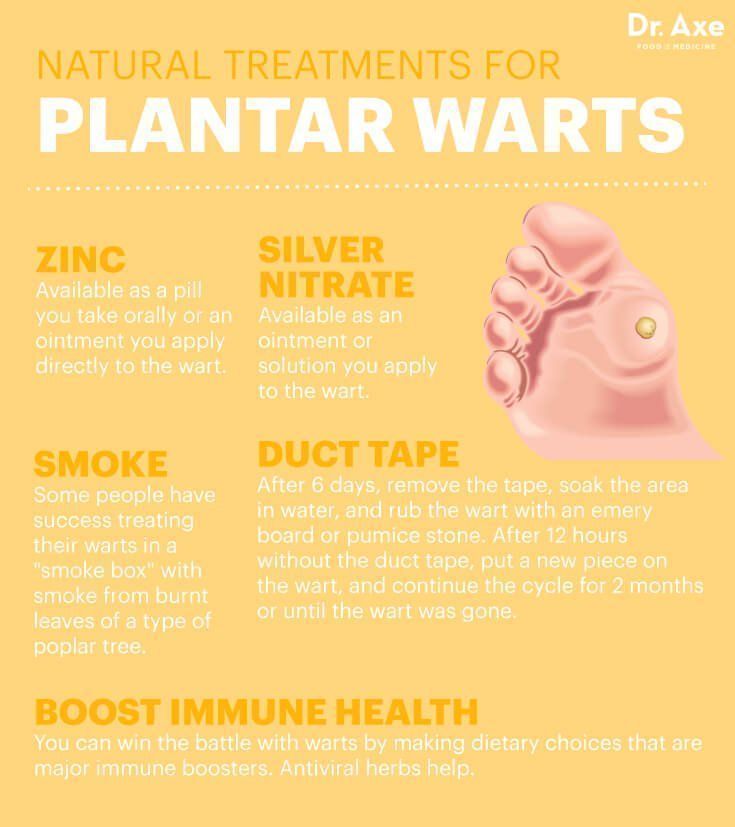
Depending on the location of your plantar wart, your immune system and a whole host of personal factors you and your podiatrist will be able to develop a specific treatment plan to get rid of your plantar wart.
Option 3: Visit your local GP.
In Australia, your GP is often the first person you’ll talk to about your plantar wart.
GPs are the frontline of our health care system. They’re there for you when you need them to discuss all manner of injuries, illnesses and even those sore little lumps on your feet.
For decades GPs have used cryotherapy (dry ice) as the front-line treatment for plantar warts. And I’m not throwing shade here – podiatrists have used cryotherapy often too (and some still do).
While you can have success with cryotherapy for plantar wart treatment there’s a big asterisk in terms of risk. A deep burn on the plantar surface of the foot from cryotherapy can become a lifelong problem. Scars on the soles of your feet are painful and can form into ulcers if pressure care and excess skin growth are not regularly attended to.
So if you’re seeing your local GP (or podiatrist) who’s suggesting cryotherapy for your plantar wart be very forthright in asking about the risks and consequences of this treatment.
Now this all might sound a little grim or even hard work.
But don’t despair. Plantar warts can be effectively treated with no or minimal side effects. By reading this far you’re already miles ahead of those who’ve tried and failed before you.
Choose an option for your plantar wart treatment that you feel most comfortable with and stay true to your plan. You’ll succeed against the virus. You’ve got this.
And if you’d like to learn more. Continue to gain a deeper understanding of plantar warts.
Understanding your enemy
Plantar warts are caused by a virus from the human papillomavirus family. As such, they can look and feel different from person to person.
To catch a plantar wart (also known as a flat wart or common wart), you need to come in direct contact with a strain of the HPV virus which manages to get into your body. Usually, this occurs through the soles of your feet in high-traffic areas like swimming pools, public showers and communal areas where going barefoot is the norm.
Usually, this occurs through the soles of your feet in high-traffic areas like swimming pools, public showers and communal areas where going barefoot is the norm.
There’s no guarantee that a single contact with the virus will cause a flat wart. You’re more likely to develop a lesion if the virus gets in through a break in the skin (maybe due to tinea pedis) or when your immune system is run down low from illness or stress.
While all plantar warts can look and feel different, there are a few similarities.
- Plantar warts break up your normal skin lines.
- Small black dots are often visible which are little blood vessels called “capillaries” that the virus has tricked your body into growing that feeds the wart more nutrients.
- You can develop thicker skin over the wart as it rises out away from your normal skin.
- Plantar warts tend to be more painful to squeeze than when you push on them directly.
- They often start as small circles and can develop into larger shaps with satellite lesions as well.

- If you look at your skin and think “hmm, that looks a bit like the head of a cauliflower” then there’s a decent chance you are describing a plantar wart.
Diagnosing plantar warts (and how to tell they are not plantar corns)
If we podiatrists had a dollar for every plantar wart that was referred to us that ended up being a plantar corn, well, we’d have a fair few dollars and probably all drive around in convertibles with personalised number plates that read “CORNDOC” or something crass like that.
Sorry, back to diagnose plantar warts.
They are so easy to diagnose and even easier to misdiagnose.
Plantar warts must have breaks in skin lines and are either tender to squeeze or have extra blood vessels growing into them. Plantar corns on the other hand are more painful to press directly on and unless they have previously ulcerated are unlikely to break up your skin lines.
Another giveaway is that you must have pressure and friction to develop plantar corn.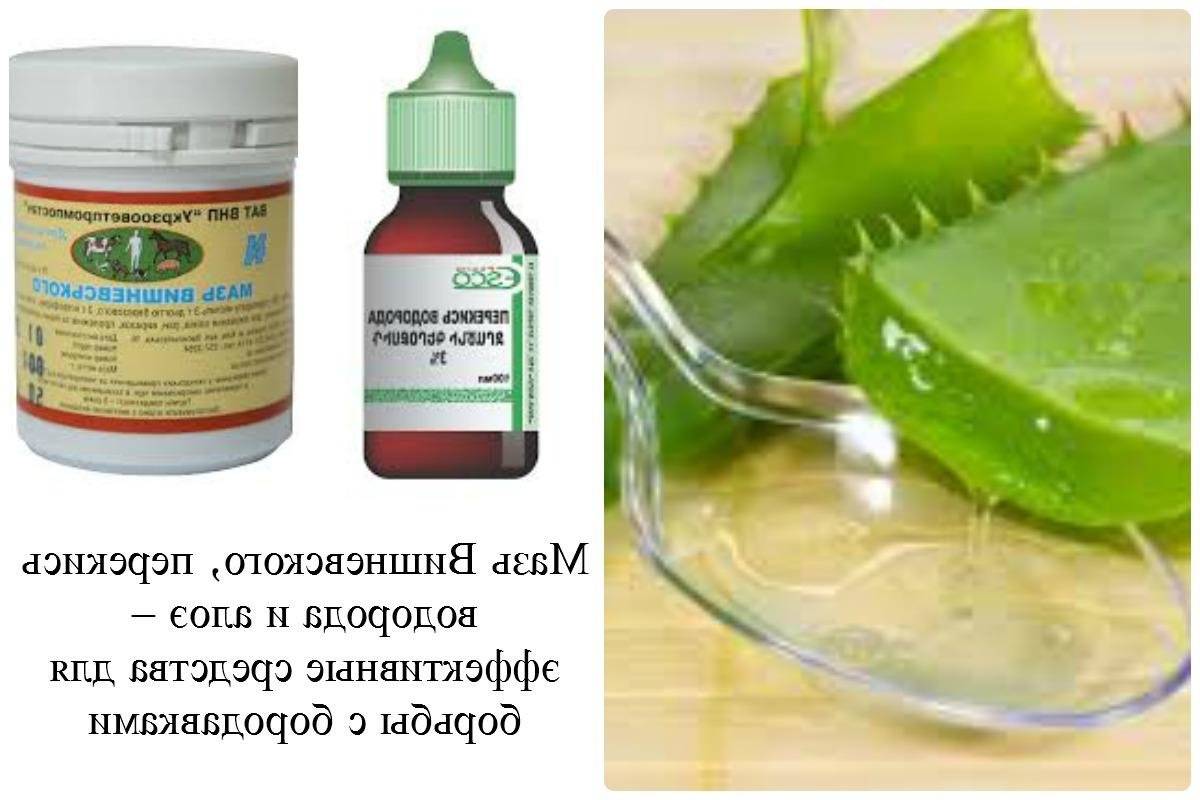 You do not need those to develop a plantar wart.
You do not need those to develop a plantar wart.
Combining these features and you (or your podiatrist) will be able to diagnose whether you have a type of wart or something else.
Can a plantar wart disappear on its own?
Your body is very good at eventually recognising that a virus has invaded and caused a mutation known as a plantar wart.
When this time arrives your immune system should be able to handle the foreign invader and get rid of your plantar wart. This occurs in around 60% of cases that are left untreated and can this process can take anywhere from 2 – 5 years.
But, be warned. Not all types of warts resolve on their own.
If your immune system is compromised the virus can spread to become larger plantar warts or warts on other areas of your body. You can also spread the virus to other people, particularly those you spend the most time around and share living space with.
Also, if your plantar wart is painful it can change the way you walk and run which in turn can lead to other muscle or joint issues.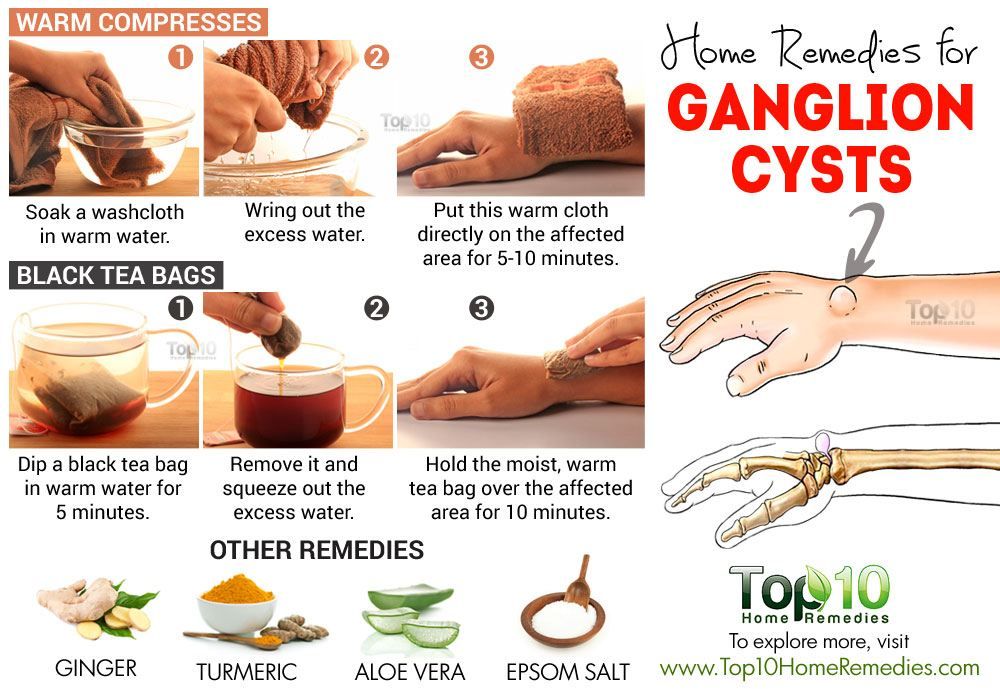
Preventing warts in the first place
If you avoid going barefoot in areas like swimming pools or communal showers you’ll reduce the risk of catching a wart. It’s also good to maximise the protective barrier that makes up the plantar surface of your foot – your skin.
Keep your skin strong and supple. Avoid your skin being too moist with sweaty socks and shoes on for long periods. Also, if your skin gets dry start moisturising with a cream that contains natural acids to keep your skin cells strong and your acidic skin mantle (barrier) at its most effective.
And lastly, if you have a plantar wart and you’re sharing a house with someone else it’s best to look out for them. A bit of empathy for their needs (good on you, thinking of others!) and always wear socks/slides/sandals around the house to reduce the chance they catch it.
Wart FAQs
Why do I keep getting plantar warts?
If you’ve had a wart once the virus is in your system.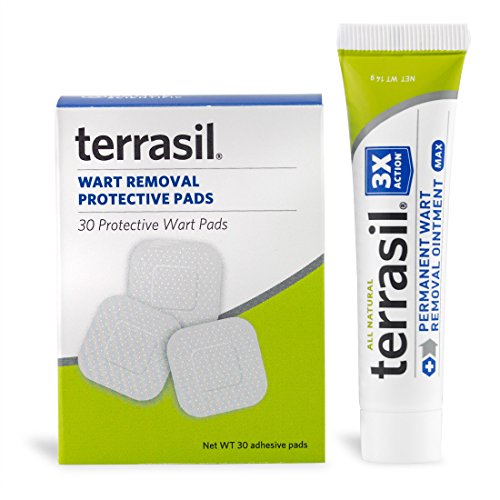 It doesn’t mean that it will definitely present again as a lesion, but it can. Times when your immune system is run down with stress or illness is when you’re most likely to have another wart lesion develop.
It doesn’t mean that it will definitely present again as a lesion, but it can. Times when your immune system is run down with stress or illness is when you’re most likely to have another wart lesion develop.
Are plantar warts contagious?
Plantar warts are contagious and as such when you treat them you should be careful to wear gloves or wash your hands immediately afterwards. Scroll up to learn how to prevent spreading them to yourself or others you love as well.
How to get rid of warts?
You can try all sorts of home remedies, you can see your foot doctor, your GP. You could even try covering it up with duct tape or banana peel. But if you want it gone, read through your 3 options above and choose the one that fits you and your needs the best.
What kills plantar warts at home?
As plantar warts are caused by the virus HPV, they are made up of your own tissue, that’s mutated. As such, anything that will kill a wart, will also damage you.
This is why plantar wart treatment is so interesting.
You can use topical agents like salcylic acid (in high doses) that are safe from the perspective that they are naturally occurring (you produce it when you sweat). At a high dose the acid irritates and burns the wart and any surrounding tissue so you do need to be very careful – best leave this to podiatrists.
Treatments like the high dose Vitamin A serum we discussed earlier (see how to get rid of warts on feet) are interesting as they don’t kill, they improve your skins ability to grow and regulate normal skin cell production vs. warty skin cell production.
Are plantar warts HPV?
All types of warts on the body are caused by the HPV virus.
Do plantar warts have deep roots?
The mutation that is a plantar wart lesion usually lives within the dermis and epidermis of the skin. The top 2 layers. They don’t have deep roots, but they do trick your body into growing new blood vessels directly into themselves to feed. These could look like a root as they stretch a bit deeper into your tissues below your skin.
These could look like a root as they stretch a bit deeper into your tissues below your skin.
Can I use a pumice stone to remove a plantar wart over time or will this plantar wart continue growing back on my foot?
Do no pumice stone your wart!
You’ll shave off viral tissue which can then easily be spread to others or yourself wherever else you use that pumice stone on your body.
Can Vicks remove warts?
Vicks vaporub is a novel way to irritate the immune system as a wart treatment. While it’s certainly not in our list of the top 3 wart treatments (it’s honestly not even top 10) there is some evidence that it might work. It’s also pretty safe and easily accessible. If you had to, and we mean, absolutely had to sub Vicks in for Vitamin A – it might work.
If you do and it works for you send us an email to tell us about your success! We’d love to hear it.
About the Author
Melbourne podiatrist Tim Mulholland will proudly own up to having had a wart on his foot that requried treatment. It was a long month of regular treatment but when it the wart was finally gone he was again found happily walking around with his toes out in his beloved sports sandals.
It was a long month of regular treatment but when it the wart was finally gone he was again found happily walking around with his toes out in his beloved sports sandals.
Stop Plantar Warts in Their Tracks with Natural Remedies
This Dr. Axe content is medically reviewed or fact checked to ensure factually accurate information.
With strict editorial sourcing guidelines, we only link to academic research institutions, reputable media sites and, when research is available, medically peer-reviewed studies. Note that the numbers in parentheses (1, 2, etc.) are clickable links to these studies.
The information in our articles is NOT intended to replace a one-on-one relationship with a qualified health care professional and is not intended as medical advice.
This article is based on scientific evidence, written by experts and fact checked by our trained editorial staff. Note that the numbers in parentheses (1, 2, etc.) are clickable links to medically peer-reviewed studies.
Our team includes licensed nutritionists and dietitians, certified health education specialists, as well as certified strength and conditioning specialists, personal trainers and corrective exercise specialists. Our team aims to be not only thorough with its research, but also objective and unbiased.
The information in our articles is NOT intended to replace a one-on-one relationship with a qualified health care professional and is not intended as medical advice.
By Annie Price, CHHC
August 8, 2016
Have you ever had a hard, grainy or fleshy growth on your foot that may or may not have been painful? If the answer is “yes,” then you might already be familiar with plantar warts. These unwanted growths are most common on the parts of the sole that receive pressure when standing or walking.
Warts on the soles of the feet are called plantar warts. A plantar wart is often mistaken for a corn or callus, those layers of dead skin that build up to protect an area on the body that’s being continuously irritated. But that’s not what a plantar wart is, unfortunately. While not life-threatening by any means, a wart of any kind is a viral infection and can be quite painful and irritating.
But that’s not what a plantar wart is, unfortunately. While not life-threatening by any means, a wart of any kind is a viral infection and can be quite painful and irritating.
Plantar warts spread extremely easily so putting a stop to them is of upmost importance. One observational study of 146 adolescents found that the prevalence of warts on the feet was 27 percent in those who used a communal shower room. (1) So there are simple things you can do (like wearing sandals in a public shower) to prevent and stop the spread of plantar warts. The other good news is that they’re self-treatable, and there are many great home remedies to get rid of warts naturally.
What Are Plantar Warts?
Warts are one of several soft tissue conditions that can be quite painful. There are many types of warts, including flat warts, common warts, plantar warts and genital warts. What causes warts? They’re all caused by a virus and can appear on all different parts of the body. When these growths appear on the sole of the foot, they’re called plantar warts.
When these growths appear on the sole of the foot, they’re called plantar warts.
Plantar warts are considered to be benign epithelial tumors. They’re hard, grainy, fleshy growths that usually appear on the soles or heels of the feet. These are areas that experience the most pressure or friction. Pressure can also cause plantar warts to be flat and grow inward beneath a hard, thick layer of skin called a callus. Like the common wart (Verruca vulgaris), a plantar wart (Verruca plantaris) is also caused by the human papillomavirus.
Plantar warts can appear alone or in a cluster called mosaic warts. They tend to grow slowly and can eventually sink deep enough into the skin to cause discomfort or pain.
When plantar warts develop on the weight-bearing areas of the foot (which they typically do), like the ball or heel, they can become the source of some daily sharp, burning pain. The pain occurs because weight is put directly on the wart, but pressure on the side of a wart can also create equally intense pain.
If your plantar warts cause pain, then you may change your normal posture or gait. You probably won’t even realize that you’re doing this, but this change in how you stand, how you walk or how you run might end up leading to muscle or joint discomfort. (2)
Causes
The root cause of plantar warts is straightforward. They’re caused by the human papillomavirus (HPV). How do you get warts from HPV? The virus enters your body through tiny cuts, abrasions or other weak spots on the bottom of your feet. The specific types of HPV that usually cause these warts include types 1, 2, 4, 60 and 63, but they’ve also been caused by types 57, 65, 66 and 156. Plantar warts are spread from skin-to-skin contact or contact with an infected surface, like a towel used by someone who has warts.
Risk Factors
Warts don’t discriminate, and they can happen to anyone. However, they’re more prevalent in children due to frequent scrapes and cuts that create openings for the virus to enter the body. People with compromised or weakened immune systems are also more likely to get warts. This includes people taking immune-suppressant medications, the elderly, and those with HIV/AIDS or another immune system disorder. (3)
People with compromised or weakened immune systems are also more likely to get warts. This includes people taking immune-suppressant medications, the elderly, and those with HIV/AIDS or another immune system disorder. (3)
Symptoms
Most people are able to self-diagnose their plantar warts, but if you’re unsure then you should always see a doctor. A doctor is very easily able to identify plantar warts without any lab test or imaging.
Plantar warts are the most common type of warts to be symptomatic because of their location. Having a plantar wart can feel quite similar to having a stone in your shoe. Similar to calluses, plantar warts are flat with tough, thick skin. This is why it’s easy to confuse a wart for a callus. The best way to differentiate between a callus and a plantar wart is that the wart is painful when you squeeze it. A plantar wart may also have black dots or wart seeds on its surface.
What to look for:
- A small, fleshy, rough, grainy growth somewhere on the bottom of your foot
- A growth that interrupts the normal lines and ridges in the skin of your foot
- Hard, thickened skin (similar to a callus) over a well-defined spot on the skin
- Black pinpoints known as wart seeds (these are actually enlarged blood vessels within the wart)
- Pain or discomfort when standing or walking
How They Spread
Plantar warts are highly contagious and spread very easily. The are two main ways that the spreading occurs. The first is by skin-to-skin contact — for example, hugs or handshakes. The second main way is by having your skin come in contact with a contaminated surface like a blanket or doorknob. Since plantar warts are infectious lesions, they can also spread by scratching or even by contact with skin shed from another wart on your body. Warts can also bleed, which is another avenue for spreading. (4)
The are two main ways that the spreading occurs. The first is by skin-to-skin contact — for example, hugs or handshakes. The second main way is by having your skin come in contact with a contaminated surface like a blanket or doorknob. Since plantar warts are infectious lesions, they can also spread by scratching or even by contact with skin shed from another wart on your body. Warts can also bleed, which is another avenue for spreading. (4)
Prevention
To reduce your risk of plantar warts, you should avoid contact with the warts of others as well as your own. That means not touching them with your bare hands, which can lead to warts on fingers. Make sure to keep your feet clean and dry, and change your socks and footwear every day. Always wear shoes or sandals when walking around public swimming pools or gym showers. These are common areas of wart-causing virus exposure. Avoid using an emery board or pumice on wart-infected areas as well.
Plantar Warts Stats and Facts
- Any type of wart is caused by a virus, specifically the human papillomavirus or HPV.

- The virus can enter the skin through tiny cuts or abrasions on the feet.
- Plantar warts are often mistaken for corns or calluses.
- Plant warts occur on the feet, most commonly on the balls and heels, areas that receive the most pressure or friction.
- Plantar warts can appear alone or in a cluster (mosaic warts).
- They are often flat and grow inward beneath a hard, thick layer of skin called a callus.
- They tend to grow slowly and can eventually sink deep enough into the skin to cause discomfort or pain.
- Highly contagious through skin-to-skin contact or contact with an infected surface.
- Usually self-diagnosable.
- Usually self-treatable.
- Can be painful but not always.
- Lab tests or imaging rarely required.
- Usually resolve within months but can take up to one or two years.
- Children, especially teenagers, tend to be more susceptible to warts than adults.
- People with weakened immune systems, such as the elderly and people taking medicines that suppress the immune system, are also more likely to get warts.

- Some people seem to be immune to warts.
- There is no definitive way to keep any type of wart from occurring again.
- A wart can reappear near the location of the one that was treated, may show up on another part of the skin or may never occur again.
Conventional Plantar Warts Treatment
Most plantar warts go away on their own without any treatment as the immune system fights off the virus causing the warts, but this can take up to a year or even two years.
Since warts can be so easily spread, not to mention irritating, painful and embarrassing, you’re probably wondering what are the best treatment options. First, we’ll talk about conventional treatment. The most common conventional wart removal treatment includes salicylic acid, over-the-counter medicines, freezing or surgery.
Here are how some conventional plantar wart treatment options work: (5)
Salicylic Acid/Topical Treatment
Topical, prescription-strength wart medications containing salicylic acid work by removing layers of the wart a little bit at a time, and the salicylic medication is applied regularly.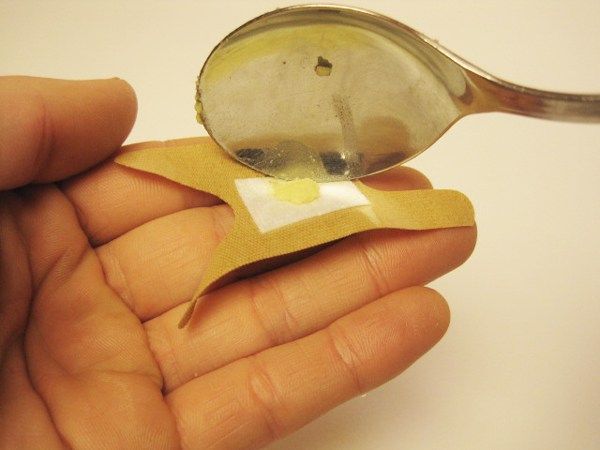 Studies show that salicylic acid is more effective when combined with freezing treatment (cryotherapy) so your doctor might recommend cryotherapy as well.
Studies show that salicylic acid is more effective when combined with freezing treatment (cryotherapy) so your doctor might recommend cryotherapy as well.
Cryotherapy
This treatment can be painful and take weeks. It destroys the wart by freezing it with liquid nitrogen. Cryotherapy causes a blister to form around the wart. When the blister peels off, all or part of the wart peels off. Cryotherapy may require repeat treatments every few weeks until the wart disappears in order to be effective. This treatment is said to work better if you follow it with a salicylic acid treatment after the area heals.
Other Acids
Your doctor might opt to shave the surface of the wart and apply bichloracetic acid or trichloroacetic acid. You’ll need to go back for repeat treatments every week or so. Common side effects include burning and stinging. Between visits, you may be instructed to use a salicylic acid topical as well.
Immune Therapy
Medications or solutions are used to stimulate your own immune system to fight viral warts. Your doctor might inject your warts with a foreign substance (antigen) or topically apply the antigen.
Your doctor might inject your warts with a foreign substance (antigen) or topically apply the antigen.
Minor Surgery
The warts are cut away using an electric needle. Since this procedure can be painful, your skin is numbed first. Surgery can cause scarring and isn’t typically used to treat plantar warts.
Laser Treatment
Laser surgery uses an intense beam of light, or laser, to burn and destroy the wart tissue. The evidence for the effectiveness of laser treatment is limited. It can also cause pain and scarring.
All of these conventional treatments are not without risks and/or side effects. And they obviously don’t take a natural or holistic approach to the removal of the warts. However, there are natural treatment options that are often very effective and come with less risk.
Natural Plantar Warts Treatment
Sometimes warts can spontaneously and naturally go away on their own after a short time. The immune system also can do the job of fighting the warts at other times so they clear up in a matter of months. So one natural treatment option is actually to do nothing other than be patient and keep up a healthy diet and lifestyle that encourages your immune to do its job.
The immune system also can do the job of fighting the warts at other times so they clear up in a matter of months. So one natural treatment option is actually to do nothing other than be patient and keep up a healthy diet and lifestyle that encourages your immune to do its job.
However, if you don’t have that much patience or you find the wart or warts highly painful or annoying, then there are natural warts treatments you can use in the comfort of your home.
Natural or alternative plantar wart treatment options include:
- Zinc: Available as a pill you take orally or an ointment you apply directly to the wart, zinc benefits include fighting the virus that causes warts.
- Silver nitrate: Available as an ointment or solution you apply to the wart.
- Smoke: Some people have had success treating their warts in a “smoke box” with smoke from burnt leaves of a type of poplar tree.
- Duct tape: After six days, remove the tape, soak the area in water, and rub the wart.
 After 12 hours without the duct tape, put a new piece on the wart, and continue the cycle for two months or until the wart was gone.
After 12 hours without the duct tape, put a new piece on the wart, and continue the cycle for two months or until the wart was gone. - Boost immune health: You can win the battle with warts by making dietary choices that are major immune boosters. There are also many antiviral herbs you can try.
Find out more about natural wart removal treatment in my How to Get Rid of Warts article.
Plantar Warts Treatment Precautions
Whether you choose conventional or natural treatments, you must be diligent to keep up treatment on a daily basis until the warts are entirely gone. If you want to successfully treat a wart and reduce the chances of it coming back, it must be removed completely.
In terms of the smoke box option, you have to be very careful not to burn or blister the soles of your feet by keeping them a safe distance from the smoldering leaves. I know this method probably sounds a bit out there, but there is actually scientific evidence that backs up its usage. (6) Just make sure to be very careful.
I know this method probably sounds a bit out there, but there is actually scientific evidence that backs up its usage. (6) Just make sure to be very careful.
Research results have been mixed on the effectiveness of duct tape in removing warts. (7) If the duct tape covers too much normal, healthy skin tissue, then skin irritation can easily develop.
You might be wondering if you can play doctor and somehow cut away the wart yourself, but stop that train of thought. It’s essential that you don’t try to this, as it can lead to infection or injury to the area as well as spreading of the warts. Instead, opt for natural treatments for plantar warts.
Final Thoughts on Plantar Warts
If your own at-home treatment of plantar warts doesn’t seem to be working, then you may want to see your doctor to have them removed professionally. However, you can also wait it out because it does often take many months for warts to go away. You never want to attempt to “surgically” remove a wart yourself. What you should do is diligently keep up with any natural, at-home treatment of your choice.
What you should do is diligently keep up with any natural, at-home treatment of your choice.
Unfortunately, there is no definitive way to keep any type of wart from occurring again, but a healthy immune system is truly the best defense against a virus-based skin issue like a plantar wart. The more you take preventative measures like keeping your immune system in tip-top shape, the less likely you are to contract plantar warts or have a recurrence of these annoying lesions.
Read Next: Hyperplasia: Separating Fact from Fiction & How to Treat It
How to safely and effectively remove warts at home
Warts are plant growths on the skin that can appear anywhere on the body. They cause discomfort and unaesthetic appearance. Although warts are generally safe for health, they can be unpleasant and unwanted. In this article, we will look at various methods for removing warts at home, their safety and effectiveness.
Causes of warts
Before you know how to get rid of warts, you need to understand what causes them to appear. Warts are caused by the human papillomavirus (HPV). It can be transmitted through skin contact such as shaking hands or sexual contact. Transmission of the virus can occur through broken skin, such as a scratch or cut. People with weakened immune systems are more likely to contract the virus and develop warts.
Warts are caused by the human papillomavirus (HPV). It can be transmitted through skin contact such as shaking hands or sexual contact. Transmission of the virus can occur through broken skin, such as a scratch or cut. People with weakened immune systems are more likely to contract the virus and develop warts.
Home remedies for wart removal
1. Medicines
In pharmacies, you can find many medicines for removing warts. They contain acids that help break down wart tissue. Some of these products contain salicylic acid, while others contain lactic acid. Medicines can help get rid of the wart in a few weeks.
2. Use of ice
This method can be used if the wart has just appeared. Ice helps reduce blood flow to the area of the wart, which can reduce the size of the wart. Ice should be applied to the wart several times a day for a few minutes.
3. Garlic
Garlic contains antiviral properties and may help fight HPV. It must be cut and applied to the wart for several hours, then washed off with warm water.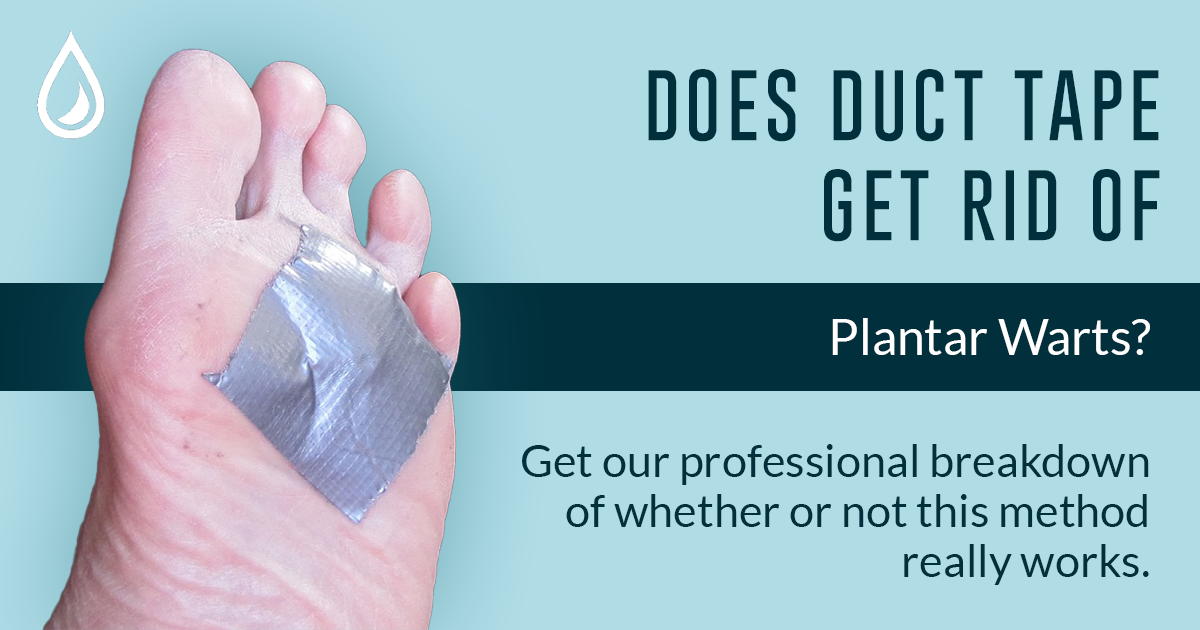
4. Banana peel
The banana peel contains acids and enzymes that can help remove the wart. Banana peel should be applied to the wart and secured with a bandage or band-aid overnight. You need to repeat the procedure for several days.
5. Essential oils
Some essential oils, such as tea tree oil, juniper, and lavender, have antiviral and anti-inflammatory properties that can help get rid of warts. Add a few drops of oil to a carrier such as olive oil and apply to the wart.
6. Aloe vera
Aloe vera can help get rid of warts due to its anti-inflammatory properties. You need to cut the aloe leaf into pieces and fix it on the wart with a bandage overnight.
7. Soda
Baking soda is another home remedy for wart removal. It must be mixed with water to create a paste. Apply to the wart and leave for 10-15 minutes, then rinse with warm water.
Risks and Precautions
Be aware that home wart removal methods can be dangerous and cause burns and other skin damage. If the wart is large or located on a sensitive area of the skin, such as the face, a dermatologist should be consulted.
If the wart is large or located on a sensitive area of the skin, such as the face, a dermatologist should be consulted.
Also remember that some methods may work for some people but not for others. Some people may be allergic to some of the ingredients, so test a small area for skin reaction before using home remedies.
Conclusion
The article introduced home methods for removing warts, such as medicines, using ice, garlic, banana peels, essential oils, aloe vera, and baking soda. While these methods can be effective, precautions should be taken and skin reactions should be tested on a small area before use.
FAQ
1. Can I use home remedies to remove facial warts?
Some methods, such as using ice or aloe vera, may be safe to use on the face. However, if you’re not sure what you’re doing, it’s best to see a dermatologist.
2. Can home remedies eliminate warts completely?
Home remedies can help get rid of warts, but they don’t always get rid of them completely. If the warts are large or located on a sensitive area of the skin, it is recommended to consult a dermatologist.
If the warts are large or located on a sensitive area of the skin, it is recommended to consult a dermatologist.
3. How often should I use home remedies for wart removal?
The frequency of use depends on the method. Some methods can be used daily, while others can be used no more than once a week. Follow the instructions on the package or consult a dermatologist.
4. Can home wart removal methods cause scarring?
Home remedies can cause scarring if used incorrectly. Therefore, it is necessary to follow the instructions and take precautions.
5. Can home wart removal methods harm healthy skin?
Home remedies can damage healthy skin if used incorrectly or if you are allergic to some of the ingredients. Therefore, it is necessary to test the reaction of the skin on a small area before use and follow the instructions.
How to get rid of warts? – Cogerent
If you’re worried about a wart, don’t worry. This formation can, and sometimes even needs to be removed. What is the nature of warts, where they come from on our face and body, and how to deal with them, we will tell in today’s article.
What is the nature of warts, where they come from on our face and body, and how to deal with them, we will tell in today’s article.
What are warts?
Warts are called formations in the form of a papilla or nodule on the skin of a person, having a benign character. The size of the warts can be different – from a few millimeters to a centimeter or more in diameter. Warts can be single or occur in groups. As a rule, the color of warts is flesh, gray, yellowish, pink, sometimes brown.
Warts are caused by human papillomavirus, which is transmitted from a sick person to a healthy person mainly through direct contact, sexual or household contact. Warts are relatively safe, but if there is a threat of injury or other indications, they must be removed. In rare cases, a wart can turn into a malignant tumor.
When are warts removed?
Wart removal is recommended if
- the wart causes discomfort or pain (plantar warts can be very painful)
- if the wart bleeds, there has been a change in its color and shape
- increased number of warts
- the wart has reached a large size
- the wart is located on the face or other prominent place
What are warts?
As already mentioned, the cause of warts is the human papillomavirus. However, not all warts are caused by this virus, such as senile warts. There are different groups of warts that differ in the type of virus that causes them and their clinical manifestations.
However, not all warts are caused by this virus, such as senile warts. There are different groups of warts that differ in the type of virus that causes them and their clinical manifestations.
Common (vulgar) warts are painless, hard, flesh-colored growths. The main area of localization is the hands, less often the face. The size of such warts is in the range of 3-10 millimeters.
Plantar warts are a variation of the common warts, but they occur on the feet where pressure/rubbing of the shoes occurs, especially when the feet sweat excessively. They are very dense dry keratinized formations of gray color. Plantar warts can be very painful when walking. They can be only a few millimeters in size or reach the size of a chicken egg.
Flat (juvenile) warts are round or irregular nodules. Localization – the surface of the hands, face. Flat warts appear most often in children and adolescents. Their occurrence is often provoked by irritation and violation of the integrity of the skin: scratches, cuts, etc.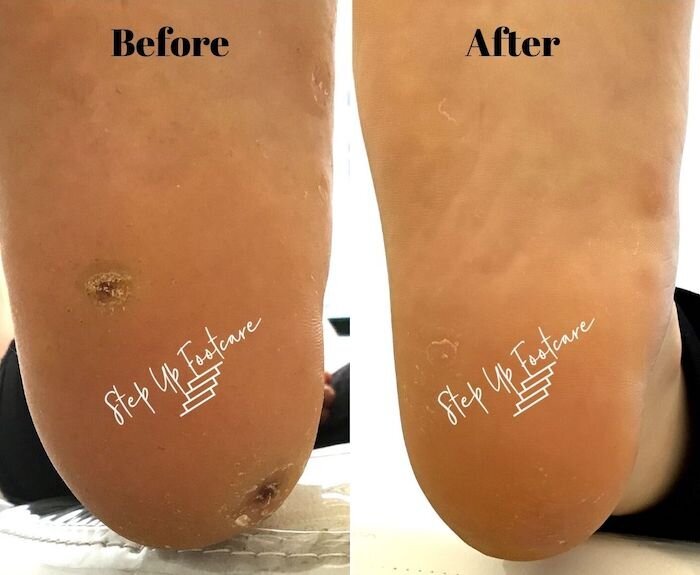
Genital warts (genital warts) small soft pink or reddish nodules. Such warts develop most often on the genitals, in the intergluteal or inguinal folds. Such warts are transmitted in most cases sexually.
Why do warts appear most often on the hands?
The most common type of warts are common warts, the favorite place of which is the hands, less often the face. The fact is that the virus enters the body through microcracks, abrasions, cuts – and such injuries are typical for the hands. Hands are an area of the body that is injured more often than others, so it is the skin of the hands that is more prone to warts than other areas. Thus, most often patients of clinics try to get rid of warts on the fingers and palms.
Treatment of warts
Often patients are concerned about how to remove warts so that they disappear forever. It is important to understand that it is impossible to destroy papillomavirus. The main methods of treatment are the removal of warts – the external manifestation of the virus, as well as measures aimed at strengthening the immune system in order to prevent the reactivation of the virus.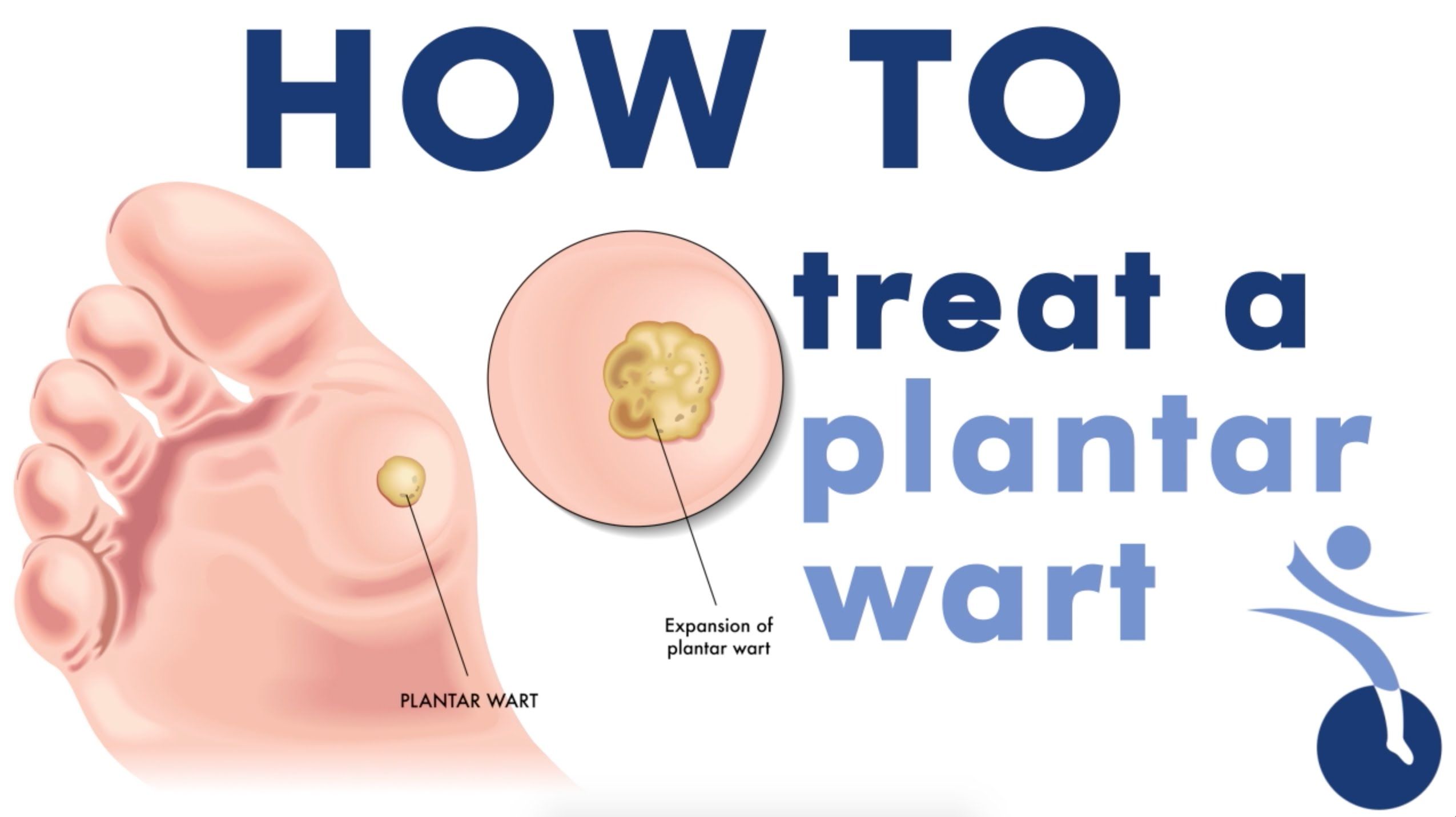
The main method of wart removal is
- laser
- radio wave
- surgical
- electrocoagulation
- cryodestruction
Your dermatologist will recommend the best treatment method for you.
In many cases, doctors prefer laser wart removal due to its high efficiency and safety. This method is also the main one for the removal of neoplasms in the COHERENT clinic.
The advantages of the laser method are bloodlessness – the blood vessels are “sealed” during the procedure; non-contact – there is no risk of infection; speed – the formation is completely removed in one 15-minute procedure (unlike, for example, cryodestruction, when one wart is removed in stages over several approaches). Also, the laser method shows a good aesthetic effect – there are no scars, scars, burns, pigmentation in place of the wart. Most often, it is possible to remove the wart completely without a trace. The procedure is painless.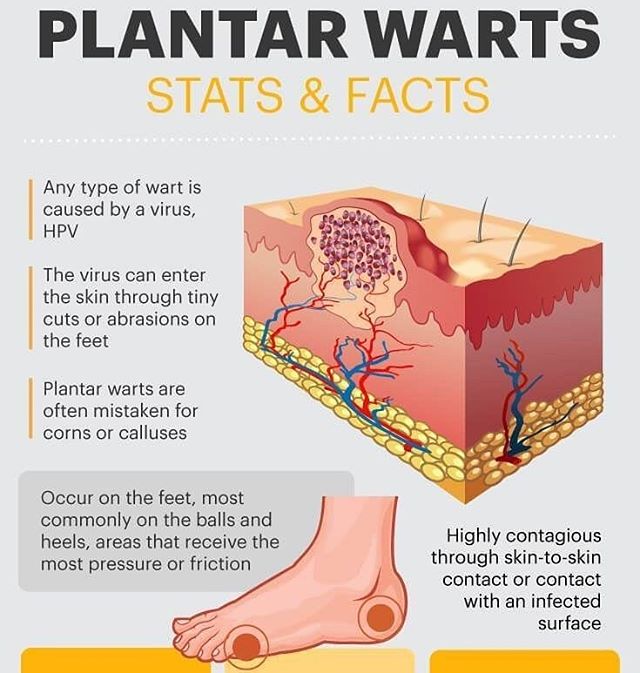




 After 12 hours without the duct tape, put a new piece on the wart, and continue the cycle for two months or until the wart was gone.
After 12 hours without the duct tape, put a new piece on the wart, and continue the cycle for two months or until the wart was gone.